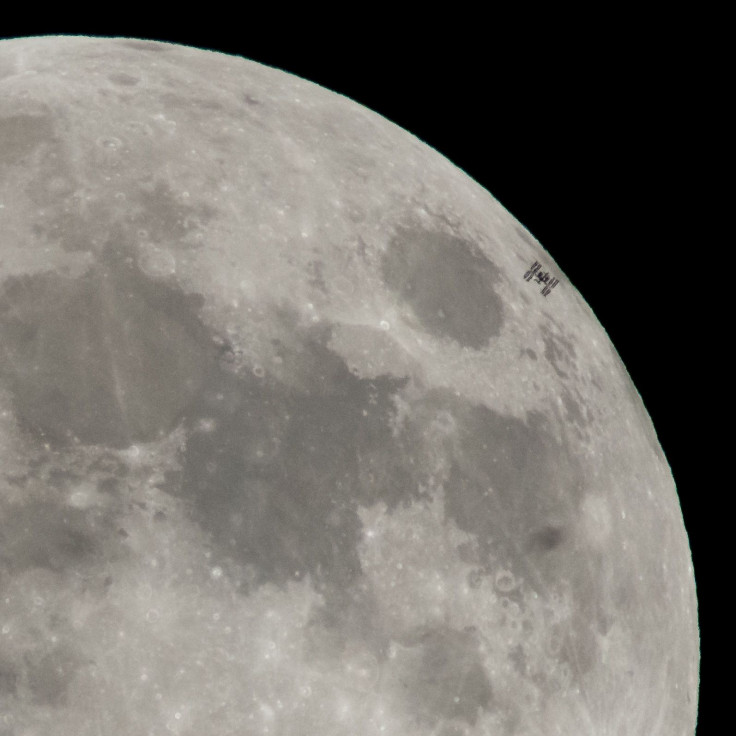NASA Photo Shows International Space Station’s Silhouette Over Full Moon

During the second full moon of the new year, a lot of attention went to the lunar eclipse that bathed it in red light. But it wasn’t just the Earth’s shadow that passed over the moon — there was also a spacecraft.
The International Space Station passed in front of the full moon Jan. 30, NASA reported, sharing a photo of the vehicle’s silhouette over the gray and white moon.
When one object in space passes in front of another from the perspective of Earth, or another spectator, it’s called a transit.
The station is currently carrying six crew members, including three from NASA: Joe Acaba, Mark Vande Hei and Scott Tingle. Cosmonauts Alexander Misurkin and Anton Shkaplerov are representing Russia and Norishige Kanai is up there for Japan.
According to NASA, the ISS was moving about five miles per second when the photo was snapped from Alexandria, Virginia.
It was just hours later that Earth stepped between the sun and the moon to cut off all direct light to our planet’s only natural satellite. The moon did not go entirely dark, however, because of the way light moves through Earth’s atmosphere — red light made it out the other end and shone upon the moon. People refer to this coloring as a “blood moon.”
During this time, the moon was also near the point in its orbit when it is closest to Earth, what’s known as perigee. That creates the illusion that the moon is far larger and brighter than it really is, an effect called the supermoon.
There are many more moon-related events to come in 2018. Those who are interested in catching a glimpse at the right time can find projections of things like moon phases and eclipses through NASA. The space agency has a “Dial-A-Moon” feature that allows people to fast-forward through all the moons coming in the next 11 months.
Don't panic: the moon isn't getting closer! We just thought this morning's #SuperBlueBloodMoon was a good chance to have a little fun with a double-exposure. pic.twitter.com/gtHcMhKRWV
© Copyright IBTimes 2025. All rights reserved.





















